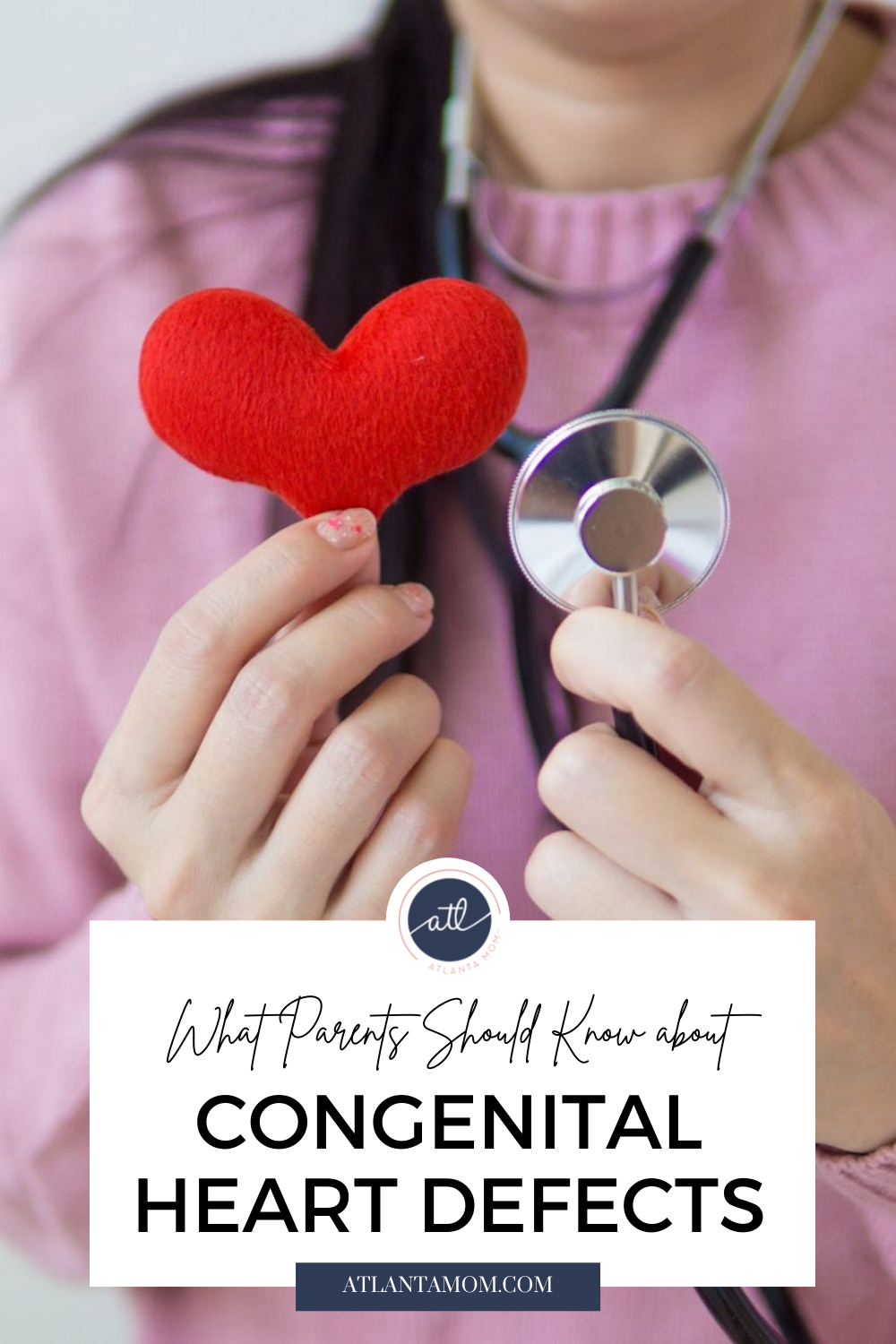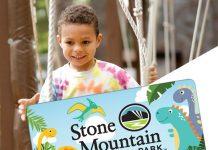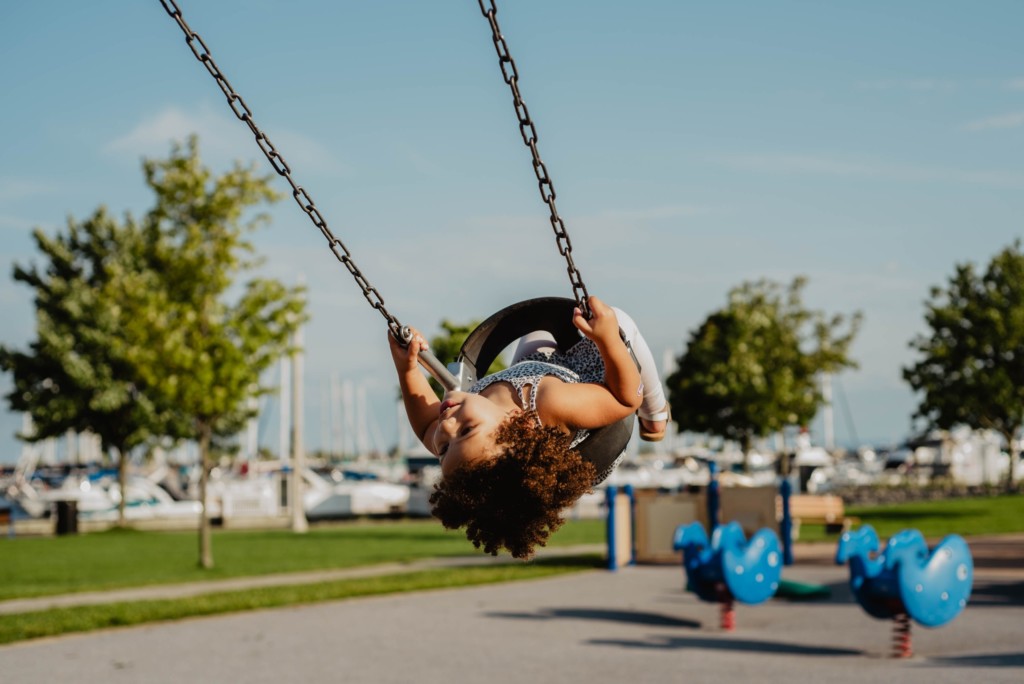 Four years ago, February changed from the month of Valentine’s to Heart Month for our family. Even though we still cover our house in hearts, eat chocolate and pass out treats to our friends, it has an entirely different layer added in for us now. When our son, Jones, was 6 months old he was diagnosed with a Bicuspid Aortic Valve, which is a congenital heart defect, and it changed the trajectory of our lives forever.
Four years ago, February changed from the month of Valentine’s to Heart Month for our family. Even though we still cover our house in hearts, eat chocolate and pass out treats to our friends, it has an entirely different layer added in for us now. When our son, Jones, was 6 months old he was diagnosed with a Bicuspid Aortic Valve, which is a congenital heart defect, and it changed the trajectory of our lives forever.
 Now February is a time when we spread awareness for Congenital Heart Defects which are the most common birth defects among infants and according to the Children’s Heart Foundation, 1 in 110 babies is born with a CHD. Before our son was born, I had no clue how prevalent these defects were or what symptoms to look for. Ever since the diagnosis of our son, it has become a passion of mine to encourage parents to be their children’s biggest advocate and to educate them on what questions to ask their doctors and what the signs of heart failure look like.
Now February is a time when we spread awareness for Congenital Heart Defects which are the most common birth defects among infants and according to the Children’s Heart Foundation, 1 in 110 babies is born with a CHD. Before our son was born, I had no clue how prevalent these defects were or what symptoms to look for. Ever since the diagnosis of our son, it has become a passion of mine to encourage parents to be their children’s biggest advocate and to educate them on what questions to ask their doctors and what the signs of heart failure look like.

Our Heart Story
I will never forget the day, January 11th, 2018. I could tell you what I was wearing…garnet lulu lemon leggings and a black and gray target sweatshirt. I could tell you that the weather was gray and cold. I could tell you that it was our little boy’s first day of a mother’s morning out program at a church in our town so I could finally have a moment to breathe in those early months of motherhood.
This was the day that changed the course of my life as a mom. It will forever be the day that I look back on and see a strong pivot in my soul. A day in which a diagnosis took over my world and have yet to let it go.
When I picked Jones up from his morning program, I could tell that his teachers were concerned. They told me his breathing seemed labored and that he had thrown up both bottles they attempted to give him.
These habits were not new to me. They had been happening in our house for about two months. Jones had lost weight, was continuously fussy, grunted constantly, and vomited up almost everything he ate. I had called the pediatrician on multiple occasions searching for answers but was told these were just phases, or I should try a different formula, or maybe he had a cold.
When the teachers echoed my concerns, I knew I needed to take him to the doctor and have him seen. I immediately made an appointment and took him in that afternoon. The doctors I saw that day instantly picked up on what was happening. I will never forget the look on their faces as they told me that we needed to take Jones to the hospital…that this was a heart problem.
A heart problem?! What did Jones’s heart have to do with not taking bottles? With grunting? With being fussy? These questions coming from the heart of a new mom are one of the biggest reasons I share our story… other moms need to understand what to look for.
From that point on, we rushed Jones to a hospital in Greenville, South Carolina, which was nearby to where we lived at the time. We were admitted to the hospital where they did an EKG and an Echocardiogram. I knew very little about what these tests did and had no clue that they would soon be very routine for our family.
The cardiologist came into the waiting room where my husband, my parents, and my in-laws sat waiting for news. The words he spoke are imprinted in my soul like a pressed fossil. He said, “I am so sorry. Your son’s heart is incredibly sick.”

He went on to explain that Jones had a bicuspid aortic valve. In a healthy, “normal” heart, your aortic valve has three flaps in the shape of a Mercedes sign that flap open and shut. In Jones’s heart, two of those flaps were fused together. So, his heart was working twice as hard to do the work that a normal heart does. At the point of his diagnosis, Jones’s heart was taking up half of his chest cavity and was twice the size it should have been. He needed a balloon valvuloplasty, which is when a surgeon pushes a catheter through a vein, into the heart, and into the aortic valve. A tiny balloon on the end of the catheter is then inflated to push the flaps to open wider, making the work less intense on the heart.
Jones was airlifted from the hospital in Greenville to the Children’s Hospital at MUSC in Charleston, South Carolina, where they have a team that specializes in children’s hearts. Even though the balloon valvuloplasty was successful at opening up the valve, Jones’s heart muscle was too damaged and it became clear it would never return to normal functioning.
In May of 2018, Jones was placed on the Heart Transplant List and five days later we received a call in the middle of the night that a heart donor had been found for our little boy.
This moment was both miraculous and devastating at the same time. While we were praising God for the blessing that was being bestowed upon us, another family was buried in deep sorrow at the loss of their child. After many conversations with friends and family, I concluded in my mind that this child will forever live on in the heart of Jonesie. We are infinitely grateful for this gift of donorship and think about this family’s sacrifice daily.
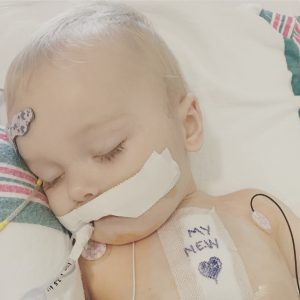
On May 25th, 2018, we waited for Jones’s surgery to begin. I was terrified. As the hours crept by and the surgery got closer, we clutched our son in our arms, and we didn’t want to let go. We were lost in the thought that this could possibly be the last time we held him. We whispered into his ears, begging him to come back to us and reminding him how much we loved him. Jones underwent an 8-hour surgery in which his surgeons skillfully removed his heart and sewed in a brand new one.
He was in the hospital for 3 weeks and then we stayed locally in Charleston close to the hospital for 6 weeks so he could recover. As a transplant patient, you are basically trading in one set of symptoms for another set but we accept these symptoms as they come and forge a path forward as best we can.
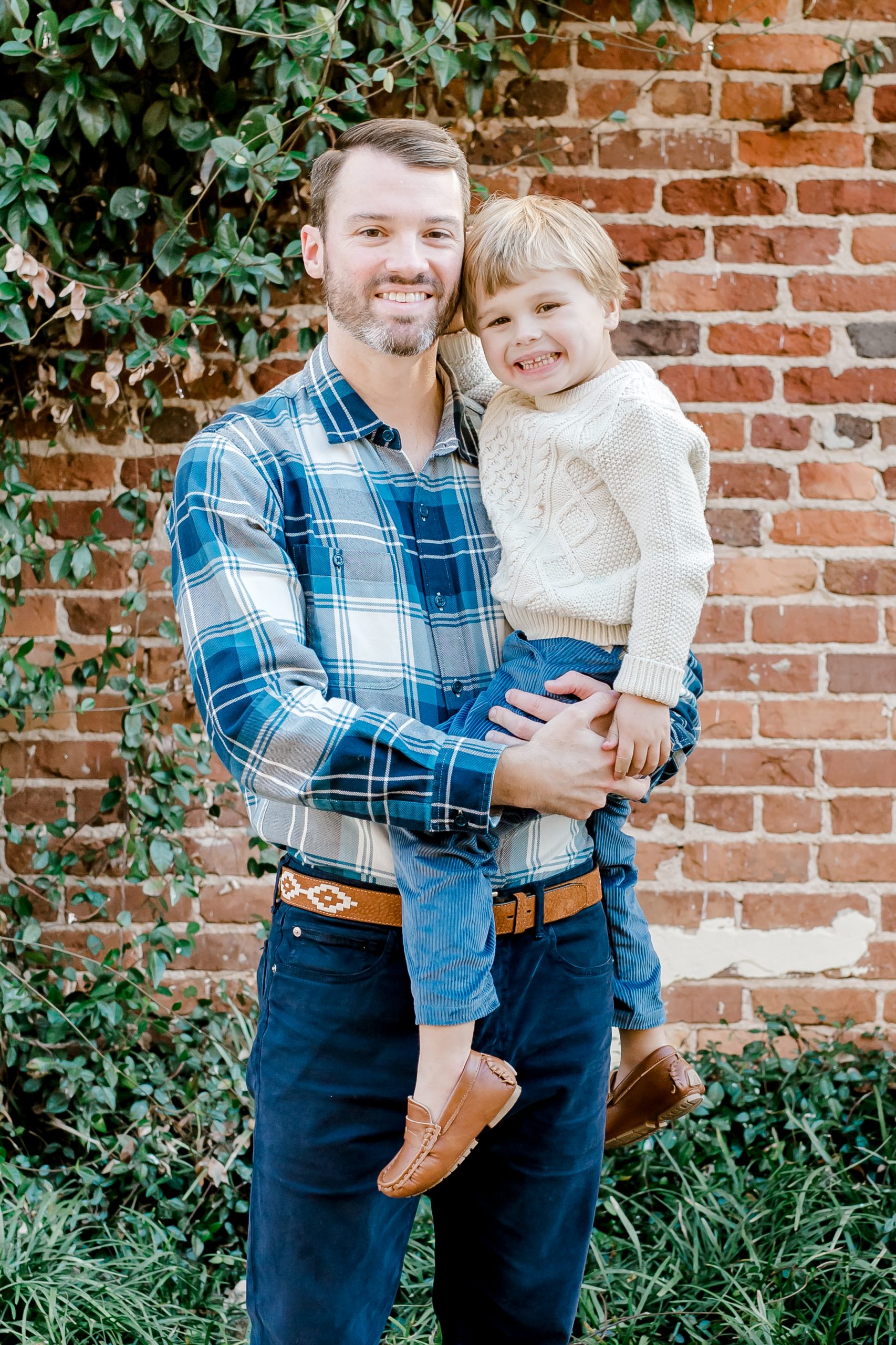

Jones is now a healthy, thriving four-and-a-half-year-old. He goes to pre-school, loves superheroes, and shows us what strength looks like on a daily basis. He takes 3 medications in the morning and 4 medications at night that help his body accept his new heart. We check in with our cardiologists every 3 months and he gets his blood taken for labs every two months. Once a year he is put under anesthesia and his doctors send a catheter in through his veins to check the pressures of the heart and to take a tiny piece to biopsy for rejection.
You see, Jones’s body fights his new heart every day. His body knows that it doesn’t belong there and that it isn’t its own. One day, we hope in 15-20 years, his body will willfully reject the heart and he will need a new one.
We don’t focus on this future day. We instead focus on the miracle of our son being here on this earth with us. God remains faithful as He continues to lead us down this path. He holds each of us in His strong and willing hands as he helps us cope with the realities of living a life as a heart family.
Why do I share Our Story?
I was baffled, confused, and completely thrown off guard at Jones’s diagnosis. I had no clue what a congenital heart defect was or that they were the most common birth defects among babies. 1 in 100 babies is diagnosed with a congenital heart defect yet I was not educated on what signs to look for nor did our pediatrician pick up what was going on until 6 months old.
From that point forward, I wanted to share what I knew with other parents. Research has shown that early detection and early intervention can make a huge difference in the cases of CHD’s. In Jones’s specific case it is likely that if we would have detected his defect earlier, a transplant would have never had to occur.
There are two main things I like to share with soon-to-be parents and parents of infants.
The first is for expecting mama’s who are getting ready to go into their 20-week anatomy scan. During this scan, the ultrasound tech will take a much closer look at the heart. If they cannot get a good look at the heart, they should recommend that you come back on another day to try again. If they do not, you should insist!
While looking at the heart, there are 6 questions you should ask while they are looking at the heart:
- Can you see all four chambers of the heart?
- Do the upper two chambers have valves?
- Do these valves appear to be controlling blood flow correctly?
- Are there two lower chambers that are pumping blood to the body?
- Are the valves and vessels exiting the body in a crossing fashion?
- Do you see any large holes in the baby’s heart?
These specific questions were given to a fellow heart mama by the pediatric cardiologist at Boston Children’s Hospital. She passed them on to me and I like to shout them from the rooftops.
Don’t ever be shy about asking questions regarding your baby’s health! You are their greatest advocate and their only voice when they don’t have one.
I also like to share the signs of heart failure with new parents. I know this sounds a little scary and daunting. I never want to place fear in new parents in a time that already feels very vulnerable. But as I mentioned earlier, early detection is incredibly important with CHD’s and I wish greatly that I had this list of signs when Jones was so sick.
According to the American Heart Association, the following symptoms are incredibly important in spotting heart failure in children:
- Trouble breathing (for us, Jones grunted constantly, trying to get more air. His little chest moved up and down rapidly and his skin pulled tightly around his rib cage).
- Poor feeding or growth (Jones refused bottles, vomited – I am not talking spit up, but puddles on the floor- almost every time he ate. He lost two pounds between his 4th and 6th month).
- Excessive sweating (Jones sweat constantly, but especially when he was sleeping).
- Low blood pressure
Like I mentioned above, asking questions is pivotal to your child’s health. There were many moments in which I felt as if I was being brushed off for being a paranoid new mom, but mother’s intuition is so real. I knew something was going on and I am so grateful I continued to push and ask questions. If you feel like you are not getting the answers you need, there is nothing wrong with getting a second opinion.
I hope sharing our story here will do two things. I hope it shows God can do incredible things in our lives even through unimaginably difficult circumstances. I also hope that it empowers parents to be advocates for their children’s health.
